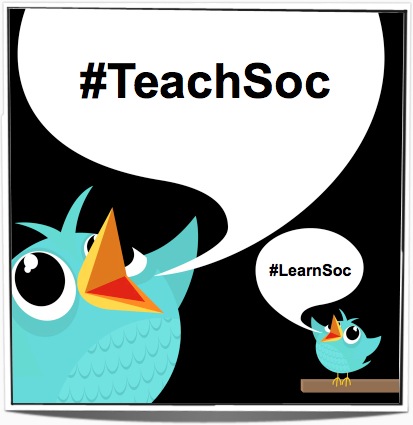Success looks like failure sometimes. When your students angrily resist what sociology has to teach them it’s easy to see it as a failure. You can either blame yourself (I could’ve taught that so much better!) or you can blame the student (well if they don’t want to learn, they can kick rocks!). However, I have a novel suggestion; you could say, “how wonderful! I’m thrilled that our class created such a stir within you.”
Before you can fill a knowledge gap the student must become aware of it. Sociology involves worldviews and many times the knowledge gap students have are firmly entrenched in their worldview. So when students discover their knowledge gaps in the classroom, they create a sort of cognitive dissonance between their present (gap filled) worldview and a sociologically informed worldview. Cognitive dissonance is uncomfortable; even maddening.
Sociology is inherently subversive. Great educators are inherently agitators. When the two combine, no one should be surprised that some students become upset.
When a student pushes away it’s an opportunity to pull them closer. I’ve found anger is a common side effect of learning. The moment when the student expresses their anger (an All CAPS EMAIL, a classroom rant, a dramatic storming out of the room, etc.) you are presented with a simple choice; return their volley with the swift authority afforded to you by your titles, statuses, and degrees or reframe the situation, take the high road, and show your class that this room is a learning environment. Put simply, you can go to war with a student over his/her knowledge gap or you can reframe the situation and work together with the student to fill in that knowledge gap.
Reframing The Situation
There are really two separate perspectives that need to be reframed yours and your students. You need to see a distant angry student as a wonderful opportunity and your student needs to see their knowledge gap as a momentary inconvenience that can be assuaged by sociology. You’re a professional, so I assume you can handle your end of this reframing process. Your students may need more help, so I’ll focus here on them.
“When you said that today I could tell you were talking about me,” is a common statement I hear after class from students. I teach 300 students in a movie theater, but somehow students are certain that what I said in class was directed at them. We all do this; personalizing impersonal statements. Typically when students are angry about something discussed in class it’s because they have made this mistake. They feel like what sociology has to say about trends, averages, and international level data is somehow an indictment about their individual life or their family. “My family worked hard for everything they earned!” “What you said about people can’t be true because (I/my family)…” “You’re wrong about because (I/my family)…” If a student is angry look for the personalization. Then ask, “why do you think I was talking about you (or your family)?” Students will struggle to find any evidence. From here you can help your students remember that sociology is primarily about trends, averages, movements at the group level.
Anger makes us see in extremes. “You make it seem like __ are doomed and helpless!” “I’m sick of you telling us how white people have the world handed to them on a silver platter!” “If the United States is so bad why don’t you live somewhere else!” Luckily it’s pretty easy to neutralize this exaggerated thinking. I’ll ask my students, “What makes you think things are so terrible?” Or I’ll ask them, “what was said in class that made you think whites have the world handed to them?” What often seems to happen is students replace the findings of empirical sociological research with their reaction to them. I’ll say in class, “98% of the 128 Billion dollars of government backed loans by the FHA during the post WWII housing boom went to white Americans.” But what they hear is, “whites are totally underserving of their social standing. I’m talking about you; yeah you in the third row. You should be ashamed to be alive. I hate your guts, your family’s guts, and everything you stand for.”
To neutralize the “whites are served the world on a platter” we need to reframe it in less exaggerated terms. I do this by asking my students, “Do you believe that your [social location] has an impact on your life? Does a Hispanic American have the same social experiences as a Native American, African American, Euro American or any other racial group?” In a sense I am reframing the question from “are people of different social groups 100% different” to “are people of different social groups 100% the same”. The answer to both those questions is no. The truth is somewhere in the middle. I want my students to acknowledge that some groups experience social privileges to some degree. It’s not a road paved in gold or highway to hell dichotomy. Its a matter of degrees (which vary depending on context).
Helping students move away from extreme dichotomous thinking will defuse tension and allow them to refocus filling in their knowledge gap.
Conclusion
When emotions and adrenaline surge in heated exchanges it’s too easy to lose perspective. Remember that you have the power to redefine the situation and use their energy to help them learn in a clever pedagogical jujitsu.







